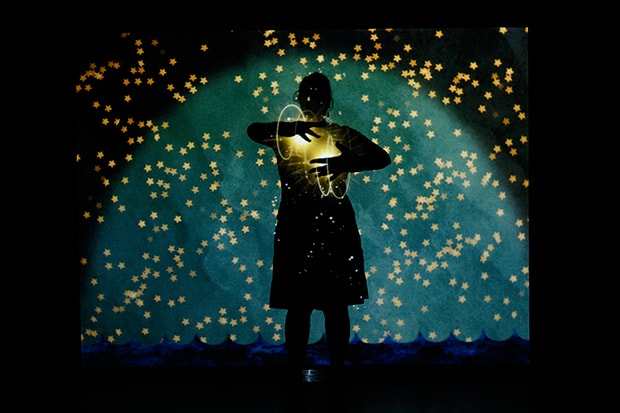The Corporeal Phantasm
Thinking about how affect functions at the spectator-screen nexus presents us with serious challenges. As I suggested above, in order to understand what happens between the domain of affect and the production and maintenance of social differences, we need to turn to intermediary figures that can help us develop an analytic for the subject [sic] at the interface. On the side of spectator, this intermediary figure is what I call the corporeal phantasm. I want to work through a set of issues Kaja Silverman develops in The Threshold of the Visible World in order to understand the nature of this phantasm—and how it is related to the development and maintenance of social differences. While Silverman does, at times, revert to older, more rigid notions of representation and identification, much of the work that she does here helps us to open the questions of classical feminist film theory to the concerns articulated around digital media’s affective powers. Silverman’s main interest in Threshold is in what might—or might not—allow us to identify with a variety of cultural positions of gender, race, and class. She argues that:
[W]hile most of us are, in fact, quite peripatetic when it comes to narrative and structural positionalities, we are considerably less tractable when confronted with the possibility of bodily reconfiguration, especially when it would involve an identificatory alignment with what is socially disprized. Generally, we either cling to our own corporeal coordinates, or aspire to assume ones which are more socially valorized.1
This is an interesting and important postulate in which we are thinking about relationships between affective experience and the production of social differences. According to Silverman, in the domain of narrative we are more flexible in our identifications, and in the domain of bodily experience we are less flexible. If identification means imagining myself in another position, it is easy for me to do; if it demands that I imagine myself as inhabiting another body, or directly as another body, it becomes more difficult.
Silverman explains that she came to this realization to a great extent through personal experience. She relates that she often walks through an area crowded with homeless people on Telegraph Avenue in Berkeley, and this walk can throw her into a kind of state of panic. At first she interpreted her response in economic terms: She didn’t know how to calculate to whom, among so many needy people, she should give money. She then realized, however, that the panic stemmed from an entirely different cause. It was not terribly threatening to narratively imagine herself in the position of the homeless people, but when it came to projecting herself into an embodied reality—of calloused feet, filth, stench, where she would exactly not be herself but someone other—it engendered her panicked reaction.
What this anecdote draws our attention to—in terms of thinking about affect—is that social positions often related to gender, race, and class are associated with modes of embodiment, states of feeling, some of which are culturally valued, even idealized, and others disparaged and disprized. In other words, each of us relates certain states of feeling to a variety of related cultural imagos, and so, when we assume particular affects—let’s say, when we buy and engage certain affects as media and consumer experiences—they exist in an interplay with notions of social differences. Way below the level of conscious perception and emotion—affects and postures, as Marcel Mauss and Michel Foucault have taught us—are already gendered, raced, and classed. And various forms of marketing and digital filmmaking are increasingly focused on this microanalytics of sensation. These associations are arguably becoming more, rather than less programmed as our vitality and affective capacities become the very substance of capital. What is at stake in so many cultural products from clothing lines to Hollywood blockbusters is the exploitation and/or production of various kinds of links between micro-sensation and desirable subject positions. Affect always subtends and exceeds the subject—at the same time as it de- and re-forms it.
Silverman advances her analysis of embodiment, identification, and social difference through a comparison of Jacques Lacan’s famous version of the “mirror stage” to Henri Wallon’s somewhat different account of the same developmental stage. She writes:
In Lacan’s narrative, the mirror image is sufficient to induce an apprehension of “self” in the child. In Wallon’s, two components must be brought together in order for that to happen: the mirror image or “exteroceptive” ego, and the “proprioceptive” ego.2
In Lacan’s account, the child’s look in the mirror produces a kind of jubilant (mis)recognition, and this moment is sufficient to create a sense of self. The child’s bodily incoherence, his lack of control of his limbs and bodily boundaries at that point, is easily subsumed in the (mis)recognition of the coherent, unified image in the mirror. In Wallon’s account, however, the process is somewhat more complex. The child struggles to reconcile the image in the mirror with its proprioceptive sense of self by performing a variety of actions. Wallon’s young subject literally regards his mirror image in a number of different ways, experimenting with his perceptions over a period of time before he comes to accept it as his image. He reaches out to it with his hand; he licks it; he turns to it when his own name is called. The sense of unification thus does not happen all at once, and takes some adjustment on the side of sensation and proprioception. And, for Wallon, proprioception “is as central to the formation of the corporeal ego as is the visual imago.”3
Proprioception is powerfully linked both to the conception of our bodies as belonging to us, and to orientation. It is thus a figure that in itself is a kind of switch point between the asubjective, presubjective, or extrasubjective dimensions of affect and its at least partial capture in and as forms of subjective experience. The term, Silverman explains:
derives etymologically from proprius, which includes among its central meanings “personal,” “individual,” “characteristic,” and “belonging to”; and capere, which means “to grasp,” “to conceive,” and “to catch.” It thus signifies something like “the apprehension on the part of the subject of his or her ‘ownness.'” This notion must be distinguished from identity, which, at least in the case of the visually unimpaired subject, depends upon the image. Proprioceptivity can best be understood as that egoic component to which concepts like “here,” “there,” and “my” are keyed. It encompasses the muscular system “in its totality,” including those muscles which effect the “shifting of the body and its members in space.”4
The proprioceptive self is thus a different kind of entity than the identified one. The question that proprioception would seem to address involves the determination of the me and not-me. It also maps the spatial positioning of this own-ness, cueing us as to the location and movements of our bodies in space. It concerns not so much our images or ideas of self, but a sense of self. It exists between the exteroceptive sense that delivers information about the outside world and the interoceptive sense that delivers information about the internal body, such as pain. It provides us with a sense of our own extension in space and with a basis for orienting ourselves.
Silverman also uses the work of Paul Schilder to develop her own concept of what I am calling the corporeal phantasm. It’s worth looking at Schilder’s fascinating work directly, at least to draw out the features that can help us understand the corporeal phantasm. In his 1935 work, The Image and Appearance of the Human Body, Schilder, drawing on the work of the neurologist Sir Henry Head, formulates a theory of what he calls the body schema. The body schema, which we can see as a version of Freud’s “corporeal ego” or Wallon’s “proprioceptive ego,” is in constant transformation. According to Schilder, “it is not a structure but a structuralization.”5 It is also synesthetic. “In the scheme of the body, optical, tactile and kinesthetic impulses can only be separated by artificial means,”6 he writes. Perception is also inherently active and connected to powerful forms of mobility. “There are no perceptions without actions.”7 The body schema is not generated by the individual in isolation: “The touches of others, the interest others take in the different parts of our body, would be of enormous importance in the developments of the body schema.”8 The body schema is always intersubjective and intercorporeal, according to Schilder. We take in parts of others’ body schemata and project parts of our own. It is social and historical, potently connected to cultural and familial forms as well as psychic fantasy. One of the important characteristics of Schilder’s body schema is the manner in which it reworks notions of the cultural image repertoire—like Lacan’s “gaze” and “screen”—as modes of habitual, tactile practice. The body schema is always prosthetic, incorporating things of various kinds. In order to use any tool, we need to incorporate its size, weight, and motion into our “body schema.” Schilder quotes Head: “Anything which participates in the conscious movement of our bodies is added to the model of ourselves and becomes a part of these schemata: a woman’s power of localization may extend to the feather in her hat.”9
There are two final features of Schilder’s formulation that I will describe here, as they will be particularly useful when we return to the digital cinematic interface. First, he relates his concept of the body schema to media theory, via dance and gymnastics, in a manner that is highly instructive in thinking about the operations—and the particular allure—of action cinema. He writes of our pleasure in watching a contortionist as “based upon our wish to break through the borderlines of our own body,”10 and of our constant experimentation with these contours. Finally, while he insists that he has “little to add to the classic description of identification,” that is, the Freudian one, it turns out that he in fact does. He offers us the term “appersonization” “in cases in which the individual does not want to play the role of the other person, but wants only to adopt a part of the emotions, experiences, and actions of the other person.” The appersonization may also be “an appersonization by body-image,” in which just a part of the body-image is taken.11 This concept will become very useful in our analysis of character production and spectatorial solicitation in Avatar.
Before we return to Avatar, however, I want to turn to Silverman’s discussion of Frantz Fanon, as her consideration of the corporeal phantasm in relation to racialization here may help to illuminate the interplay between appersonization, habit, and racialization in Avatar:
The account Fanon offers in Black Skin, White Masks of what it means to be black within a society which unquestioningly privileges whiteness attests once more to the necessities of including the categories of the gaze and the screen when attempting to understand the bodily ego. Fanon obliges us to conceptualize … the psychic dilemma faced by the subject when obliged to identify with an image which provides neither idealization nor pleasure, and which is inimical to the formation of a ‘coherent’ identity.12
Lacan’s “gaze” and “screen” refer to the set of cultural imagos and the gaze of the other as these complicate and triangulate the mirror stage. For the (mis)recognition to function, even momentarily, it must be culturally ratified. It never operates on its own, apart from “that cluster of images through which he or she is culturally apprehended.”13 As Silverman relates, when Fanon moved from Martinique, where he primarily identified as French, to Paris, where the white gaze forced him to identify as a Negro, with all of the negative terms that accompanied that identification in that time and place, he was in a kind of combat with his own bodily image, and felt himself to be in pieces: “It was no longer a question of being aware of my body in the third person but in a triple person.” “What else could it be for me but an amputation, an excision, a hemorrhage that spattered my whole body with black blood?”14 If affective cues and cultural-image repertoires come together in proprioception and in the sensing of self in the corporeal phantasm, it is clear from Fanon’s account how disruptions at any place in this circuit can block coherent self-formation.
If the jubilation of the (mis)recognition that both Lacan and Wallon posit depends on an idealized gaze only available to the white, male subject, the disruptions work both ways. That is, as Fanon describes, the cultural images of the black man’s “hyperbolic virility” threaten to disturb the circuit of idealized recognition of the white, male subject. Fanon writes, “the Negro, because of his body, impedes the closing of the postural schema of the white man.”15 As Silverman also contends, the image of woman’s castration or lack—she invokes these classic psychoanalytic terms—may likewise create a disturbance in the circuit of idealized white, male identification.
- Silverman, Kaja, The Threshold of the Visible World (New York: Routledge, 1995) 2. [↩]
- Silverman 1995: 15. [↩]
- Henri Wallon, quoted in Silverman 1995: 16. [↩]
- Silverman 1995: 30-31. [↩]
- Paul Schilder, The Image and Appearance of the Human Body (New York: International UP, 1978) 174. [↩]
- Schilder 1978: 38. [↩]
- Schilder 1978: 15. [↩]
- Schilder 1978: 126. [↩]
- Schilder 1978: 11. [↩]
- Schilder 1978: 206. [↩]
- Schilder 1978: 251. [↩]
- Schilder 1978: 27. [↩]
- Schilder 1978: 18. [↩]
- Frantz Fanon, quoted in Silverman 1995: 29. [↩]
- Quoted in Silverman (30). [↩]





